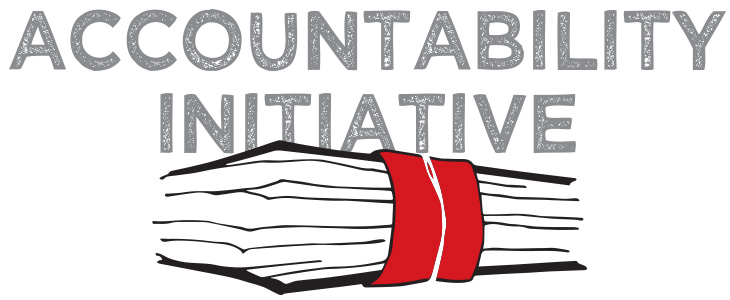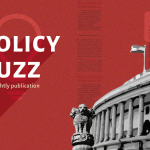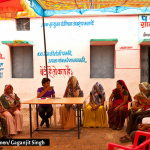
Dissemination Camp: Humara Paisa, Humara School
14 July 2014
Can decentralization reforms meant to enhance school governance in primary and upper primary schools in India achieve the goal of universal elementary education that the RTE Act envisages?
By decentralization, I mean providing access to relevant information (e.g. the amount of money being pumped into the schools) and giving full authority &power to make decisions for the utilization of resources in the schools in order to enhance the level of education.
This blog highlights my own experience of interacting with two School Management Committees (SMCs) in Sagar District of Madhya Pradesh during the dissemination camp in light of above question
The dissemination camp with a tag line, “Humara Paisa, Humara Vidyalay” was initiated during the first two weeks of July 2014 in 30 sample schools across four states (Rajasthan, Telengana, Maharashtra and Madhya Pradesh), where Accountability Initiative (AI) had previously collected data during the PAISA 2013 District Report Card survey. The dissemination camp was conducted with the aim of being an interactive session for two hours with the SMC members. It primarily focused on sharing school specific information from PAISA DRC2013 with them.
Sagar Experience:
- State information: State expenditure on Elementary Education (EE) and per student allocation – public vs. private.
- District information: District expenditure on EE.
- General school information in the specific district vs. school specific information:
- Total funds received by schools in the district and the target schools.
- School grants and entitlements: District scenario vs. target school scenario (Information such as the release of funds from the district to the schools, information on whether funds have been received by the schools , school grants expenditure, fulfillment of RTE indicators , information about uniforms and text books, status of the provision of toilets, etc.)
- School characteristics: Students’ enrolment (average) vs. attendance, teachers’ attendance and pupil-teacher ratio
In the first part of the session, we shared information regarding the average amount of funds received by a school in the district in 2012-13. In addition to this, information regarding the funds that the target school had received in the same financial year was also compared. The second section of the discussion, however, was slightly tricky to conduct. Initially we asked the SMC members to list out what they believed were the different requirements of the schools in the present scenario. Having done that, we asked the members present to prioritize their spending, assuming that the total funds allocated to their schools in 2012-2013 were directly given to them with full authority and power to spend for the betterment of their schools.
The second section was very vital to help us understand the thought process of the SMC members if given the decision making power to manage financial resources coming to their school. The hypothesis of this exercise is whether the planning process for school development is really decentralized then we may get more contextualized planning which will look into the optimal utilization of resources and enhance school governance. By the end of the dissemination camp, we would like to see if we receive data to support this hypothesis.
The two schools in Sagar district where we kick started the camp brought in some interesting observations. The first section of the two hours exercise left the SMC members awestruck. They were overwhelmed to know that such huge amounts of funds were coming in for their schools. Many of the SMC members were even more surprised to know that these funds were actually their own money paid indirectly as taxes on purchasing different commodities. Examples were given that taxes from everyday purchases, from salt to seeds to their mobile re-charges, play a big role. I saw in the school the people are really interested to know the where the money that comes from, how is it spent and when is it spent. Some of the SMC members, who did not want to be seen by the school headmaster, came to us and asked for the details regarding the funds coming into their schools in writing so that they could look into it afterwards. We told them that we would leave behind the IEC (Information, Communication and Education) materials that we had made to disseminate information to them. We shared that they could use it for further discussion in SMC in future. This shows the implication of hierarchical barriers at the school level among the teachers and parents, which blocks the smooth flow of information about funds to SMC members.
The second section of the dissemination camp gave us a good insight. In one of the schools an SMC member said, “We do not need any boundaries and toilets for our schools. We require teachers for our children.” For them, it was for education that people were sending their children to the schools. So if there were no teachers (as the school had only one permanent teacher) the whole objective of sending their children to schools was a failure for them. One of the parents stated, “To hell with boundaries and toilets, we need good teachers to teach our children so that our children may not be illiterate like us.”
In another school the SMC members shared, “If we were given the money we would have installed a hand pump in the school for our children to have clean and safe drinking water”. At present, the school does not have any drinking water facilities. Besides this, the school has till now failed to fulfill many of the criteria set under the RTE Act, the most important of them being the availability of toilets. When a school does not have basic amenities like the availability of water and toilets facilities, the students often do not come to school or go home in between the classes, thus hampering their attendance in schools. The funds that come into the schools are like tied funds which are given with certain guidelines. The schools have to spend according to these guidelines, even if they do not require something or if some other need is more pertinent than the one for which the funds have been allocated. SMC members are important stakeholders to decide the needs of their school and using their collective thought process could be the good intervention strategy altogether. This would not only define the SMC members’ responsibilities but also hold them accountable.
The schools are situated within the communities while the students and the SMC members are from the village. The SMC members and teachers, therefore, know much better about their own requirements than the people based far away from the school who are made responsible for the determination and management of the financial resources. This is not a new revelation since it is has previously been highlighted in various reports by different scholars.
This exercise, besides disseminating findings based on the information that we had collected from the schools, is to strengthen the belief that if people are given the power and authority to decide for themselves, more transparency and accountability can be demanded for an improved system of governance in the schools.
In the next few weeks, along with more stories from the field from the dissemination camps, I am hoping for our hypothesis, that if the planning process for school development is really decentralized then we may get more contextualized planning which will look into the optimal utilization of resources and enhance school governance, to be proved correct.





